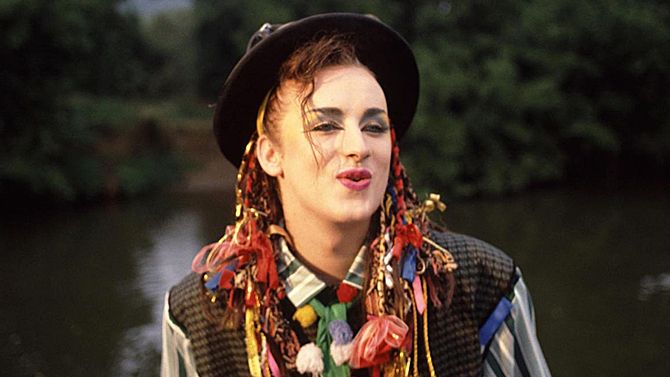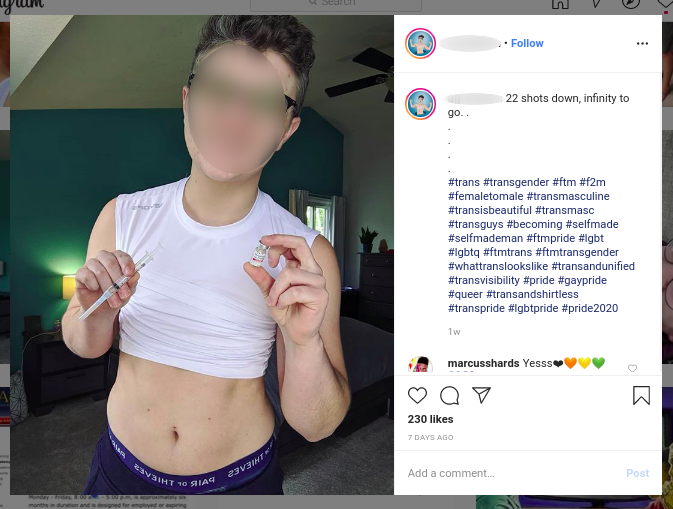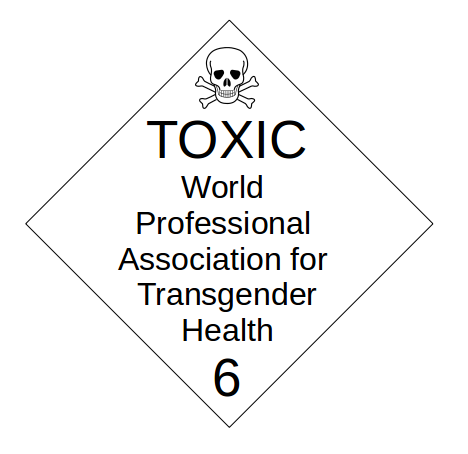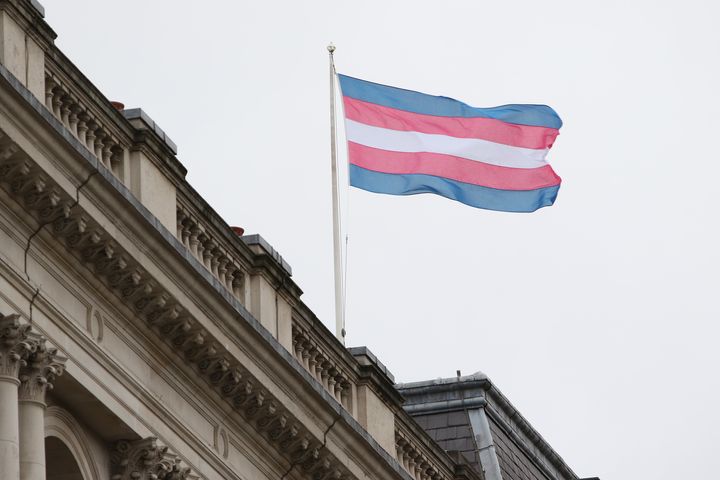Hey Boy George, We Want Your Goth Back
There was once a time when gender-bending was celebrated without requiring medicalization.

Big hair, too much makeup, clashing colors and styles: the 80s was a time of gender-crossing feminine fashions worn by men. Adam Ant, Duran Duran, and New Romantics—people often bring up goth in relation to gender, perhaps because goth cutivated a vibrant subculture where gender bending was celebrated, without shoehorning anyone into being the other sex.
Boy George recently came under fire for not adhering fully to 2020 gender politics. Having weathered savaging to make a successful brand out of his gender nonconforming style in the 80s, Boy George stood his ground during the most recent demand for correct speech around gender:
“The area we get into trouble is what it is permissible to say to a gay person. ‘Address me as this, address me as that.’ You know, having been through what I went through to be who I am, I feel a little bit reluctant to pander to this idea …”
Control of the language is just one—albeit critical—tool for transing pop culture. Emotional codependency is another. Explaining how social media encourages shared suffering, Helena, a young adult who spent her teen years active on Tumblr, describes trans/gender identity, eating disorders, and self-harm communities. Comparing online transitioning to anorexic communities, called "Anas", Helena describes it as, “unique in the way they create psychological dependence.”
“Transition is the New Black”
Specifically, co-dependence is hived in the fan-bait detailing of body disassociation. Cognitive and behavioral changes follow in ways familiar to those who study addiction.
A pattern of affiliation with other group members is supported by mutual reinforcement during each return to the online community. Conforming to the norms of the group is enforced by the carrot of flattery and the stick of exile.
A kind of “fake it till you make it” rehearsal cycle takes off as verbal or gestural repetition registers as a neural or physiological response to distress. Social transitioning rehearses biomedical transformations that mimic Boy George costuming, but go further than donning a new wardrobe. In the context of the group’s fixed definitions of identity, social transitioning can literally get embedded as part of how the brain processes reality.
Beyond mimicking gender-bender fashion, learning to walk, talk, and move in a masculine manner reinforces misogynist programming. Trans-makeover videos by Ryan Jacobs Flores and jammidodger, for instance, feature soft-cheeked masculinity of the pretty boy sort, and have gained adoring fandom. Like girls with giddy boy band crushes, commenters amplify a sense of euphoria.
“Is it just me? But literally all trans guys are so damn hot!”
“ugghh... wish i coukd start T.. any other trans guys out there dyin to get on T???”
Like a punk band crush, such attention flooding is hard to resist. Young women experiencing body distress, who may have otherwise regarded medical transitioning with casual interest, are enlisted by the crush of fans and the promised land of relief. A positive trigger, the online trans community lights up every synapse.
For an outsider, this can all look suspiciously like the freak show crowds of the past, only now trans-identified individuals are pressed into service, pandering to clicks and search engine results. Some trans-identified females enact the role of a strip tease performer, sometimes literally, revealing their emotional and physical scars to entice the Youtube viewership.


All this has become further complicated by personal trauma histories as well as the rush of admiration for those achieving credible boyish good looks. Far from being stigma-inducing and far more than a fashionable mode, transitioning is now a marker of respect both online and in society generally. For young women experiencing trauma around their female bodies, transitioning might even signal victory over past fears.
Fan-like coverage is provided by the media and trans-identified youth are esteemed for their courage and accomplishments. Stephen Stathis, a psychiatrist at the Brisbane's Lady Cilento Children's Hospital gender clinic suggests that teen girls with trauma histories consider transitioning self protection and many also regard transitioning as a way to be cool. “One said to me, ‘Dr Steve ... I want to be transgender, it’s the new black’.”
Unlike the goth era’s rejection of gendered expectations, finding oneself now has never been more institutionalized. Trans-identity must be managed for maximum peer support and prestige.
"One said to me, ‘Dr Steve ... I want to be transgender, it’s the new black’."
Eventually however, the dopamine hits from attention flooding dim, driving mood shifts typically understood as dysphoria, furthering impatience to seek another hit by transitioning further. Whereas Boy George broke with social norms, transitioning threads enforce them, and binders replace corsets as a strict ideal is pursued at the expense of health.
And as with a coming-of-age rite, transitioning is freighted with significance far beyond the costume and makeup worn to signal nonconformity. Massive followings generate emotional mirroring, ego affirmation, and rave encouragement. Especially given the well-established addictive nature of online platforms, it’s not surprising that social media has become a hothouse for transitioning.
BioMedicalizing Nonconformity
Goth nonconformity turns to biological misogyny in the context of passing. With a cred-building awkwardness, trans celebrities share their most embarrassing rites of transitioning passage. With cheesy good humor, for instance, Benton Sorenson’s video takes the viewer into the bedroom to reveal secrets, such as the step-by-step process of selecting garments with a debutant’s care. Conventions are established for body language and consumer must haves are celebrated.
If it was just a matter of garnering the most likes through nonmedical gender bending, transitioning would follow the Boy George mode of creative nonconformity. Instead, social media has popularized a medical version of GNC (gender nonconforming). Transitioning is marketed with social cache and celebrity extends even to family members, so long as they extend trans allyship.
Trans is the New Pro-Ana
The social-media dynamic perpetuates transitioning not just by emotional matching but by setting up goalposts. From a marketer’s perspective, this is transitioning gold. Massive followings lend credibility to implied claims of relieved distress. Nic on twitter comments: “I never had an interest in binding or packing until I saw it online and suddenly I HAD to. It was marketed as the safest option. I molded my spine into a new position and developed fluid buildup in my lungs. When I stopped binding, I was ridiculed as not being #dysphoric enough.” In a perfect catch-22, dysphoria is a real and ongoing result of online participation in pro-Ana like body hatred for which trans is not just a fad but a maladaptive coping mechanism.
One similarity between pro-Ana and trans communities, as Helena notes, is the psychological peer pressure to move from fan status observer (what she calls a “second-class citizen,” to authentic participant. Just as pro-Ana groups demand authenticity, those in trans communities insist on a basic effort at passing.
"Once I was on testosterone, I wanted to change my name, once I changed my name, I wanted a mastectomy, once I got a mastectomy, I wanted a hysterectomy, bottom surgery and so forth."
A pathological pathway equally sustained by online communities, transitioning is staged (laid out) and coached with what reidentified women refer to as goalposting. Even a Wiki How article listing the goals includes coaching commentary at each step. In a detransitioner thread on Reddit, veamoth writes:
"As for the trans agenda, there is definitely a weird push to transition. I don’t think transitioning is right for everyone with gender dysphoria and a lot of the specialists who evaluate those kinds of things are fearful of being ‘transphobic’ or ‘gatekeepers.’”
There is a larger online and societal pathology, in other words, promoting the transitioning path out of body distress.
Another re-identified woman, Cari Stella, broke free of the spiral when she recognized she experienced shifting dysphoria that wasn’t remedied by the medical path: “Once I was on testosterone, I wanted to change my name, once I changed my name, I wanted a mastectomy, once I got a mastectomy, I wanted a hysterectomy, bottom surgery and so forth.”
The fandom of social media relieves dysphoria—but only up to a point. This is because trans-related medical services are not resolving distress and the need to more closely pass as the opposite sex resets the goal post. A new set of social expectations evolves, such as passing more fully, triggering further transition. Although distress may be partially relieved by each completed goal post, resetting of goalposts occurs. In the process, a physical dependence on hormones and their shape-shifting effects, known as spiraling, can take over.
Why do trans influencers minimize clear red flags? The trans celebrity obviously has a self interest in hyping transitioning even while detailing drawbacks. In fact, these videos often capitalize on the shock value of the New Goth with click bait posting images such as those by Cody Talks.
Although Cody frankly presents the downside of life-altering surgeries, this is done—let’s face it—to gain trans cred and viewers. More commonly, a trans celebrity glosses the drawbacks. Listing unwanted results such as smelly armpits is farcical, however, like a smoker noticing bad breath but not anticipating lung disease. Increased hunger and the heightened energy matter less in the long-run than increased risk of heart disease, higher rates of overall mortality, suicide, suicide attempts, and psychiatric hospitalizations in sex-reassigned transsexual individuals compared to a healthy control population.
"22 shots down, infinity to go. #trans #transgender #ftm"
Is such lifelong ill health offset by intermittent relief of dysphoria? Transitioning provides the narrowest bandwidth for sorting out an identity crisis. We know that distress is a typical female coming-of-age experience, and the huge increase in females seeking transitioning is thus especially worrisome.
Suggestive sale also occurs whenever transitioning is modeled as the main solution to distress. Social media threads make salient the female experience of body distress demands transitioning After each step in the process, the person might be expected to stop, yet the ongoing promise of less distress restarts the trans contagion.
Internalizing the transitioning perspective is illustrated by the typical responses to the Benton Sorenson video linked above. Young women re-interpret their developmental years according to a transitioning explanatory narrative:
“I am biologically a female, but I have just recently begun to suspect that I might be transgender... I hadn't really heard the word until recently, but as I looked into the definition, looked back on my younger life, I realized that I felt that I identified with it. I'm pretty young though, so I'm not totally sure what to do about it. I feel kind of confused, and I'm not sure how to tell my parents... “
Her tentative assertions get confirmed as the trans script jives with some of her life experiences, gauging how she should be feeling and acting in a particular situation according to the replies from her online peers. Responses to her confusion contain no caveats but instead encourage cross dressing as a way to determine if transitioning is “right for you.”
Yet, rather than providing clarification, masculine dress might well produce a false confirmation bias effect by reinforcing a sense of being different, leading her to move on to the next goal post. For these young women, transitioning is a cultural process of display and applause in which nonconformity is no longer a band or runway style but a bodily necessity. No longer a momentary fashion statement, nonconformity is actualized in flesh.


Trans the Female Away
Transitioning is now so fully nestled within American youth culture that it goes unquestioned as just another life choice by friends and peers. And because the New Goth all happened online, parents were for the most part blissfully unaware of how mutual grooming occurs. Transitioning is so pop cultural now that even Boy George no longer qualifies.
"All the depressed kids that were once emos are now trans - they want to feel that they’re different."
At a time when mothers were encouraged to model breaking free of gender stereotypes, disaffected youth were drawn to the music of the early 80s by the UK music press because it helped establish their individuality. As one 19-year-old woman observed, “All the depressed kids that were once emos are now trans - they want to feel that they’re different.”
Just as their mothers sought bodily and financial autonomy, young women are claiming liberation from their sexed bodies as a rite of female passage. Unlike the male coming-of-age story for the nonconforming Boy George, young women now seek a darker goth path to vacate their female embodiment.
Thanks to online transmission, nonconformity is happening surgically. While the story we are told suggests transitioning as the means to achieve self acceptance, those looking outside the frame notice the harms in the ways transitioning is fetishized now. Few of the young women boldly actualizing this New Goth version of nonconformity will come out of female adulthood unscarred.
Do you want to bring the "gender madness" to an end? Help us write about it! 4W is able to pay our all-female staff and writers thanks to the generous support of our paid monthly subscribers.
Enter your email below to sign in or become a 4W member and join the conversation.
(Already did this? Try refreshing the page!)




Comments